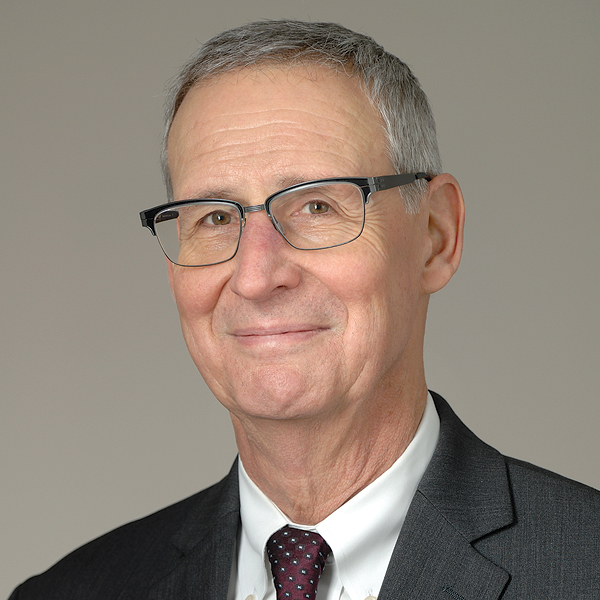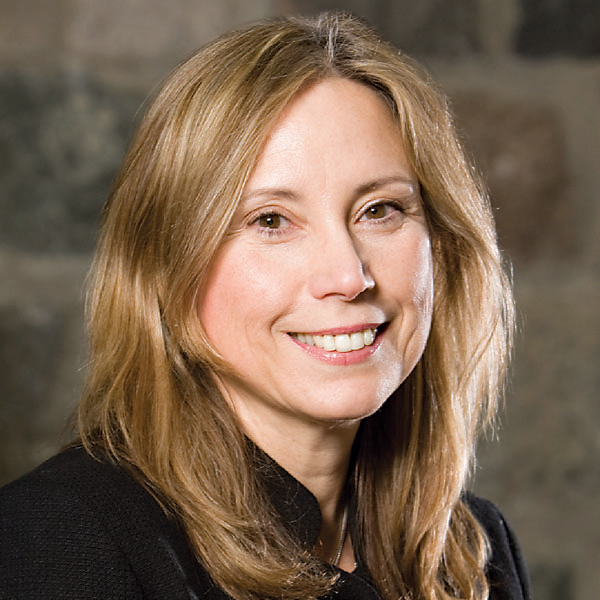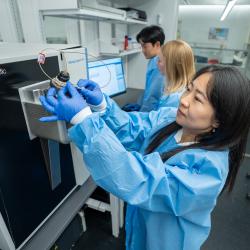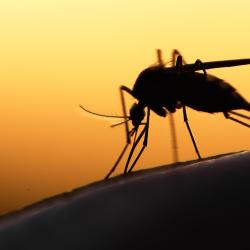Disease-fighting Alumni

Michael Cancro, B.S. ’73, Ph.D. ’76, zoology, began his trail to professor of pathology and laboratory medicine at the University of Pennsylvania Perelman School of Medicine in an unusual way—he dropped out of his undergraduate program at the University of Maryland.
When he returned to school, a microbial physiology course with Anthony MacQuillan inspired Cancro to pursue a medical research career. William Higgins, an associate professor emeritus of biology, and former zoology faculty member Audrey Barnett also mentored Cancro and supported his application for graduate school.
Cancro earned his Ph.D. with Michael Potter, a scientist at the National Institutes of Health who also held research faculty appointments at UMD. Then, Cancro became a postdoc at Penn, where he has remained.
“If it wasn’t for the support I received at UMD, I’d probably be driving a cab right now,” Cancro mused.
Instead, Cancro studies mechanisms that control the development and function of B cells, which produce antibodies to fight infections. His lab discovered several key B cell differentiation stages and characterized molecules that regulate B cell populations.
“B cells have good sides and bad sides,” Cancro said. “They can save your life, but they can also turn on you with diseases like rheumatoid arthritis and lupus. I’m really interested in how the immune system maintains a balance that provides immunity while not attacking the body.”

Carl Dieffenbach, B.S. ’76, biochemistry, still remembers one pivotal lecture at Maryland. Richard Goldsby showed a comic book panel where a dose of interferon saved the life of comic strip hero Flash Gordon. That lecture led Dieffenbach to join Goldsby’s laboratory and investigate the possibilities of interferon, which he continued to do as a graduate student at Johns Hopkins University. As a postdoctoral fellow and later as an assistant professor at the Uniformed Services University of the Health Sciences, he turned his focus to HIV.
“HIV being identified as the cause of AIDS changed my life. I remember reading everything about AIDS I could get my hands on because I had a personal connection with it,” Dieffenbach said. “In 1982, my father’s roommate at a Washington, D.C., hospital had AIDS, and I remember the lack of humanity with which the staff dealt with him. They wouldn’t touch him, but there was something wrong with him, and I just felt so bad at my core that for that young man.”
In 1992, Dieffenbach joined the Division of AIDS at the National Institutes of Health. There, he helped spur the development of medications including tenofovir, a crucial component of a pill to prevent HIV infection in people who do not have HIV but who are at substantial risk of infection. The World Health Organization includes both tenofovir and the combination pill on its model list of essential medicines.
Today, as division director, Dieffenbach continues to discover new molecules to combat HIV infection.
“Our ultimate goal is to end HIV and AIDS as a global pandemic,” Dieffenbach said.
Flash Gordon would approve.

Sofia Merajver, B.S. ’73, mathematics education; M.S. ’75, Ph.D. ’78, physics; M.D. ’87, University of Michigan, came to Maryland at age 19 from Argentina, where civil unrest disrupted her undergraduate studies.
After Merajver completed her bachelor’s degree in math at UMD, she became a physics graduate student and the only woman in her entering class. Her Ph.D. advisor, Andrew De Rocco, inspired her to apply mathematics and physics to biology.
Now a professor of epidemiology and internal medicine at the University of Michigan, Merajver uses the physical sciences to find new cures for breast cancer. To uncover the molecular and metabolic regulators of aggressive breast cancers, her laboratory developed models such as a live-cell printing technology to study cancer invasion and a flow chamber to study cancer metastases.
Merajver also treats breast cancer patients. She never considers a case hopeless, believing there is always an opportunity to help. Helping these women and their families is one way Merajver honors those who assisted her along her path.
“I don’t know what my career would be today if it hadn’t been for the people at the University of Maryland who opened their doors to a newly arrived 19-year-old immigrant and gave her a chance,” Merajver said.
Written by Z. Irene Ying
See also:
- Fighting Human Disease at All Scales, from Multispecies to Submolecular For many life scientists, staying ahead of the curve means engaging in an arms race against deadly diseases. Our Fall 2017 Odyssey magazine cover story.
- A Tale of Two Bacteriology Alumnae: A sidebar about two women whose long and successful careers began with the degrees they earned at the University of Maryland in the 1930s and 1940s.
- College Boasts Four NIH Life Science Training Grants: A sidebar about new grants that will support students studying virology and host-pathogen interactions.
This article was published in the Fall 2017 issue of Odyssey magazine. To read other stories from that issue, please visit go.umd.edu/odyssey.







